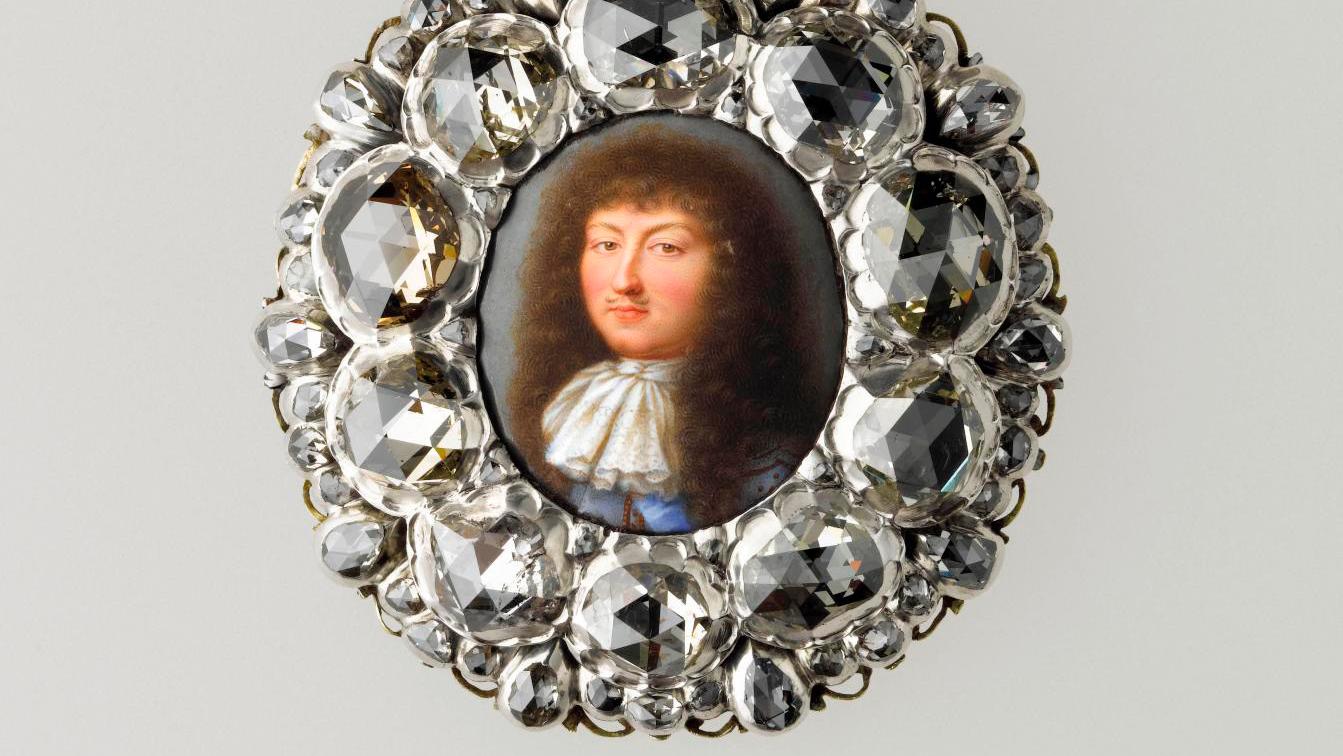Seventeenth-century French and Swiss enamellers excelled in miniature portraits, historical scenes and landscapes. Europe’s rich and famous loved their pendants, boxes and watchcases featuring remarkably delicate decoration.
Laurent Le Tessier de Montarsy (?-1684), goldsmith, Jean Petitot (1607-1691), miniaturist, box with a portrait of Louis XIV, enameled gold, silver and diamonds, c. 1670, Louvre Museum.
© RMN-Grand Palais (musée du Louvre)/Jean-Gilles Berizzi
“As for the work that is done with thick and opaque enamels , it is … to the French that we owe these beautiful works seen today on gold and upon which portraits, and even history compositions, look as beautiful as if they had been painted with oil, with the additional advantage of having a polish and a gloss that never fade,” wrote André Félibien in Des principes de l’architecture, de la sculpture et des autres arts qui en dépendent ( Principles of Architecture, Sculpture and Other Related Arts , 1676). Several decades earlier, around 1630, painting in miniature with vitrifiable colors emerged as a new technique in Blois and Paris for decorating luxurious accessories such as pendants, boxes, mirrors, jewelry and watches. The preserved pieces and archives attest to its success with a refined international elite eager to display their taste and rank. Enamellers achieved the same effects as oil painters: many of them were, in addition to working with pastel, gouache and engraving. They used sharp lines, subtle modeling and dazzling, inalterable colors to make reduced-scale reproductions of contemporary works. Their ability to produce life-like images, and the material’s resistance to light and humidity, fueled steady demand for portraits on enamel. Worn as pendants, they were often surrounded by flowers and ribbons in the manner of goldsmith Gilles Légaré (1617-1663) and engraver Jacques Vauquer (1621-1686). On “portrait” boxes, which were given away as tokens of gratitude or diplomatic gifts,…
com.dsi.gazette.Article : 44263
This article is for subscribers only
You still have 85% left to read.
